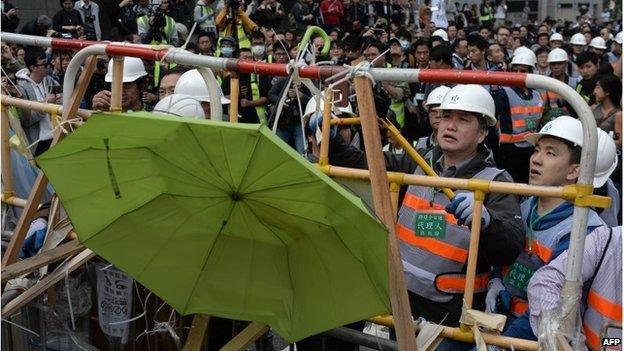Hong Kong protests: Timeline of the occupation
- Published

Hong Kong authorities are clearing the last major pro-democracy protest camp.
Protesters have been demonstrating for more than two months, demanding fully democratic elections for the city's chief executive. They also want current Chief Executive CY Leung to resign.
But while tens of thousands took to the streets at the peak of the protests, now only just a few hundred are left, and public support has waned. One of the main organisers, Occupy Central, has retreated and called on remaining groups to do the same.
The BBC looks at how the demonstrations have evolved.

28 September - Occupy Central begins
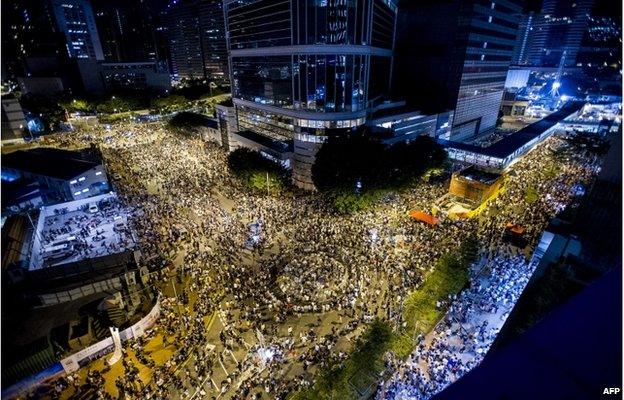
Frustration had been mounting since Beijing's ruling in August that voters would only be able to vote for their chief executive in 2017 from a list of pre-approved candidates.
Students, led by activist groups Scholarism and the Hong Kong Federation of Students, stage a week of class boycotts culminating in a protest outside government offices at Admiralty on 26 September.
The BBC's Carrie Gracie reports from the heart of the protest
A wider protest movement, Occupy Central, had planned to begin a mass occupation of the business district on 1 October, China's National Day. But organisers decided to bring forward the action to capitalise on the momentum created by the students.
On 28 September, thousands of activists take to the streets demanding change - CY Leung declares the protest illegal.
That evening, riot police use tear gas in an attempt to force the crowds back, causing a public outcry.
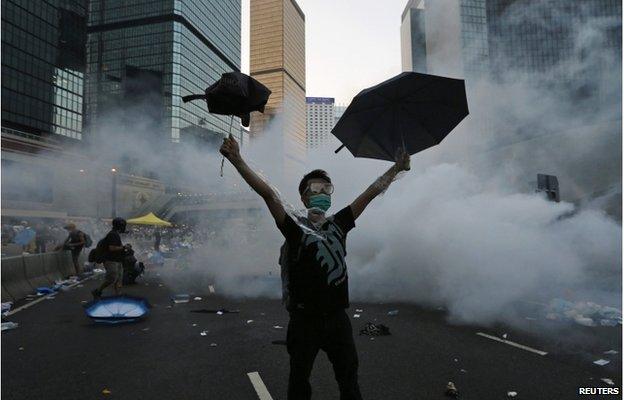

29 September - Protests escalate

Outraged by the police's use of tear gas on protesters, tens of thousands of Hong Kong residents take to the streets every night through the following week.

During the days, activists blockade several traffic junctions in the city, effectively shutting down key parts of the city.
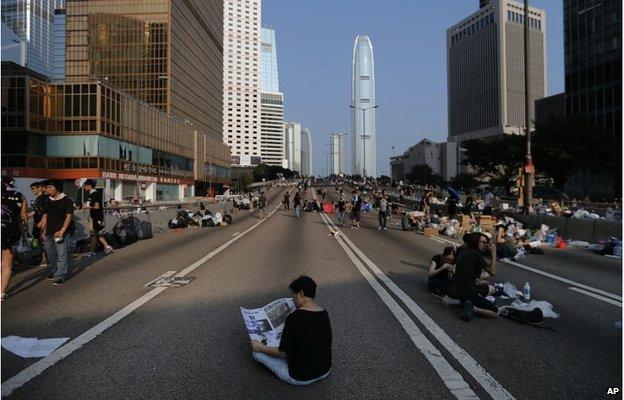
Besides the Admiralty camp, three other sites blossom in Causeway Bay, Mong Kok and Canton Road.
The traffic-free spaces created by the Hong Kong protesters' barricades offer a unique artistic opportunity, as John Sudworth reports
Over the course of October, the protest camps really take root, with artwork immortalising symbols of the protest - such as yellow umbrellas and ribbons - flourishing across the three key sites.
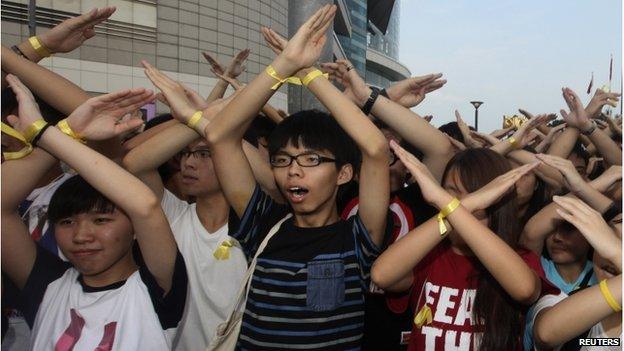
On 1 October, student protesters - including Scholarism's teenage leader Joshua Wong - stage a silent protest at an official ceremony celebrating China's National Day.

3 October - Mong Kok attacked
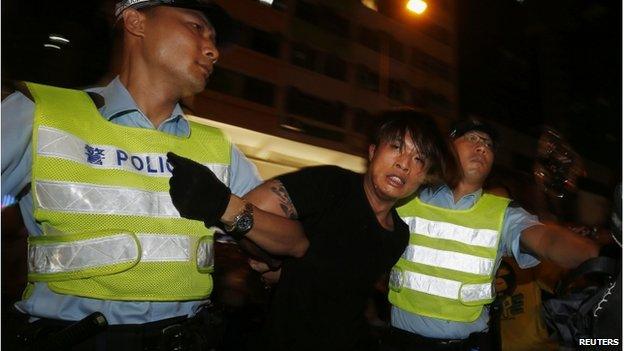
Sporadic scuffles erupt at the Mong Kok camp as local people fed up of the protests attempt to dismantle the camp. Police intervene and make a number of arrests. They say some of the anti-Occupy group are linked to triad gangs.
Protesters "feel they are under attack from thuggish elements, potentially triads", reported Carrie Gracie in 2014
Other opponents also tie blue ribbons around protest sites, to signal their support of the police.
Blue ribbon wearers: "We just want our Hong Kong back to normal"
In the following days pro-democracy activists in various camps also face off with police who attempt to clear some areas for traffic.
The students accuse the government of allowing the attack on their camp to take place, and cancel tentative plans to hold talks.

9 October - Government calls off talks
Talks were finally scheduled for 10 October, but the day before, Chief Secretary Carrie Lam says they will not go ahead. She says it would be "impossible to have a constructive dialogue" after students called for an increase in efforts to occupy main protest areas.

15 October - Protester beaten
Questions of police violence surface when officers attempt to clear Lung Wo tunnel near the Admiralty camp, with police seen beating back protesters.
People have been shocked by video apparently showing police brutality, reports Juliana Liu from Hong Kong
Outrage grows as footage emerges of several policemen taking a protester - later identified as Civic Party lawmaker Ken Tsang - to a corner and beating and kicking him. The men are suspended and later arrested.

Days later, on 20 October, Hong Kong's Chief Executive CY Leung angers some when he says in his first interview with foreign media since the protests began that fully democratic elections would give poorer residents too dominant a voice in politics.
He also repeats his refusal to resign, as demanded by protesters. Thousands march on his house in protest.

21 October - Talks go ahead
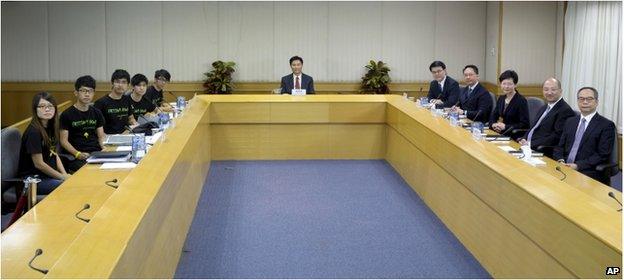
Several student leaders including Alex Chow of HKFS finally hold talks with a government delegation led by Chief Secretary Carrie Lam. But the discussion turned out to be fruitless.

Two days later protesters scale the iconic Lion Rock mountain to hang a massive banner with pro-democracy slogans. It is quickly taken down by authorities.

15 November - Beijing trip foiled
John Sudworth: ''The students arrived at the airport accompanied by around 300 supporters''
Mr Chow and two other activists attempt to fly to Beijing, seeking a meeting with China's leaders, but are foiled when Hong Kong authorities declare their travel visas invalid.

18 November - First Admiralty clearance

Bailiffs, aided by police, clear a portion of the Admiralty camp in front of Citic Tower, after the building's owners are granted an injunction by the Hong Kong high court. The clearance is peaceful, with some protesters even helping out.

26 November - Clearance of Mong Kok camp
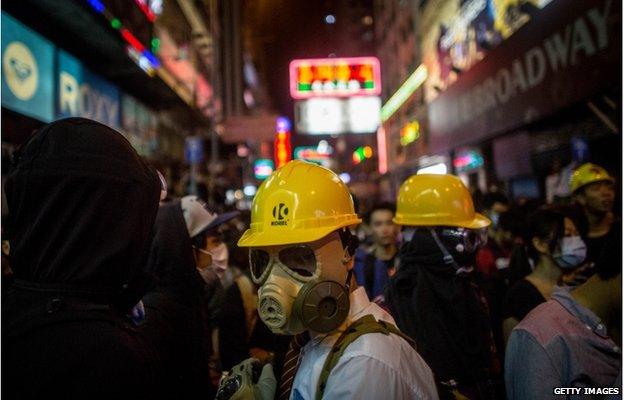
Authorities move in to demolish the Mong Kok camp after similar injunctions are granted to transport businesses. This time violence flares up as protesters clash with police. Activists attempt to retake the site in subsequent nights.

30 November - Blockade of government offices
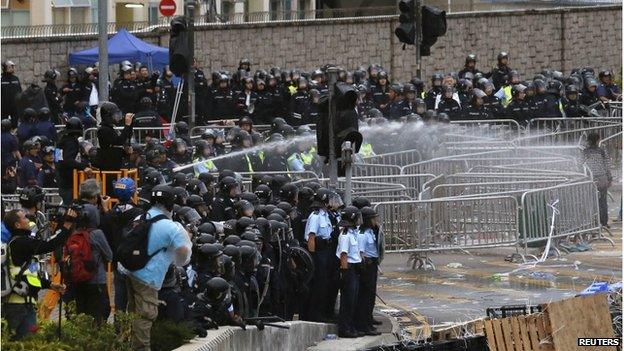
In retaliation for the Mong Kok clearance, and in a bid to inject momentum into the flagging protests, hundreds of student protesters blockade government offices in Admiralty on 30 November and 1 December, but are fended off by police, who use water hoses and batons.

3 December - Occupy Central try to get arrested

On 2 December, the three co-founders of Occupy Central - Benny Tai, Chan Kin-man and Chu Yiu-ming - hold an emotional press conference pleading with student activists to retreat for their safety.
The next day, the founders - who had not been present on the streets for some time - hand themselves in to police in a symbolic gesture which they said demonstrated "commitment and responsibility" for the protests. They would now focus on reforming civil society.
They were released without charge.

6 December - Joshua Wong ends hunger strike
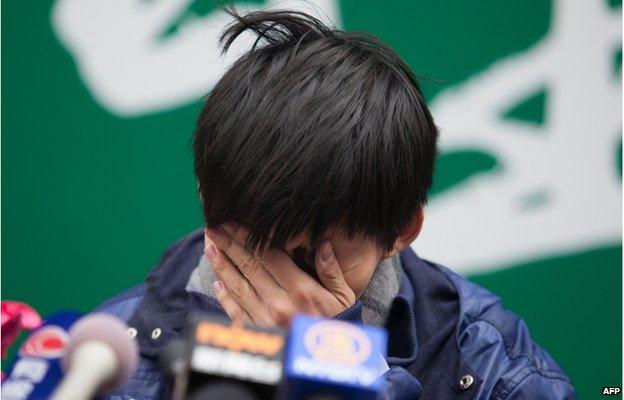
The teenage activist ends a four-day hunger strike on the advice of a doctor. With the protests losing steam, Mr Wong and a few other protesters had embarked on the action to urge the government to resume talks on electoral reform.

11 December - Admiralty clearance
Bailiffs backed by police move in to clear the main camp, near government buildings in Admiralty, after the high court grants more injunctions.
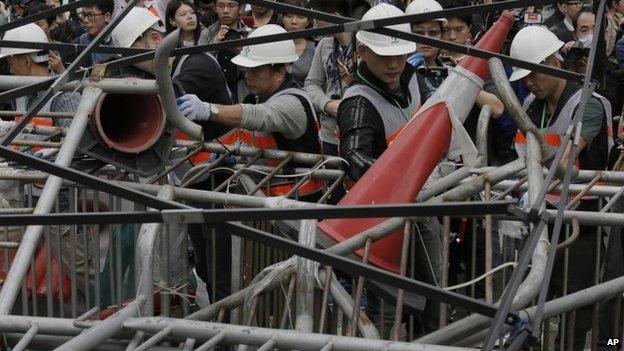
The protesters say they will not resist, but that this is not the end of their campaign for democracy.
